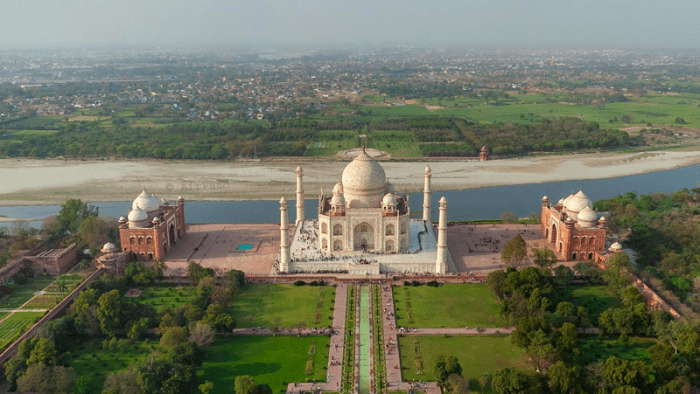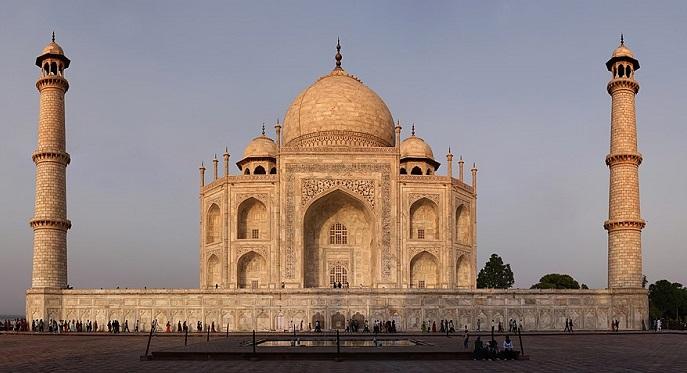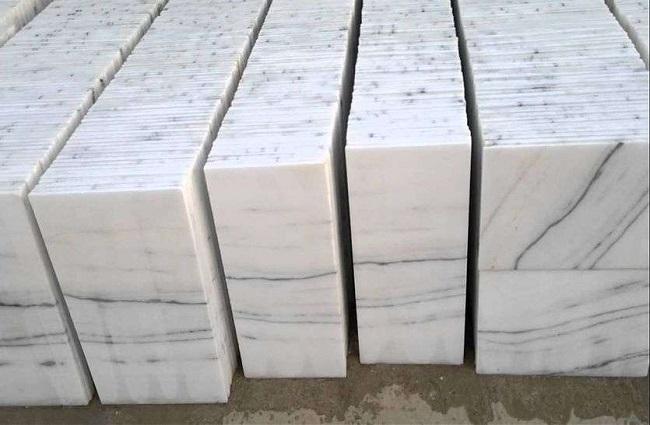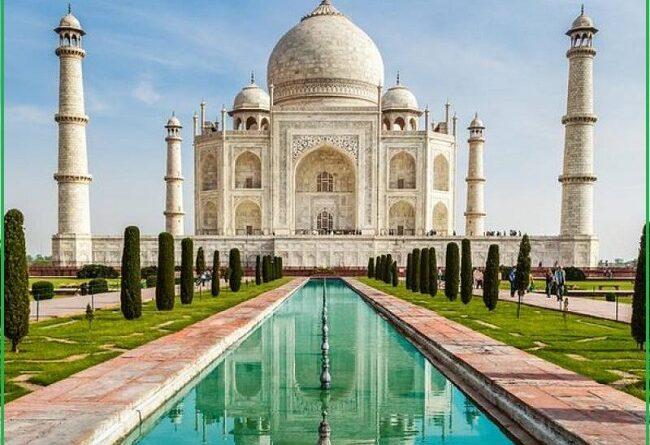Geotourism around the Taj Mahal,India-A Dream destination
Taj Mahal, India
The Taj Mahal is one of the universally admired masterpieces of the world’s heritage, located in the city of Agra India. The site is built of white marble, between 1631 and 1648 by order of the Mughal emperor Shah Jahan in memory of his beautiful wife Mumtaz Mahal. The Taj Mahal is situated on the right bank of the Yamuna River in a vast Mughal garden that encompasses nearly 17 hectares area. The construction of the site is starting in 1632 AD and was completed in 1648 AD, with the mosque, the guest house, and the main gateway on the south, the outer courtyard. its cloisters and some other subsequent work were added and completed in 1653 AD. Ustad-Ahmad Lahori was the main architect of the Taj Mahal. For its construction, masons, inlayers, carvers, painters, calligraphers, dome builders, and other artisans were requisitioned from the whole of the Mughal Empire and also from Central Asia and Iran.

Who made Tajmahal
The Mughal Emperor Shah Jahan was head-over-heels in love with Mumtaz Mahal. She was a Muslim Persian princess and he was the son of the Mughal Emperor Jehangir and grandson of Akbar. At the age of 14, he met Mumtaz and fell in love with her. Five years later in the year 1612, they got married. Mumtaz Mahal, an inseparable companion of Shah Jahan, died in 1631 while giving birth to their 14th child. It was in the memory of his beloved wife that Shah Jahan built a magnificent monument as a tribute to her, which we today know as the “Taj Mahal”. Soon after the completion of the Taj Mahal Shah Jahan was deposed by his own son Aurangzeb and was put under house arrest at nearby Agra Fort. Shah Jahan, himself also, lies entombed in this mausoleum along with his wife.
Structure of the Taj Mahal
The Taj Mahal India is the greatest architectural achievement in the whole range of Indo-Islamic architecture. The white marble dome soars 171 meters above a pink sandstone base. Four minarets frame the main mausoleum complex. The color combination of lush green scape reddish pathway and blue sky over it make the Monument extraordinary. The relief work in marble and inlay with precious and semi-precious stones make it a unique monument in the world.
The Taj Mahal is a perfectly symmetrical planned building, with bilateral symmetry along a central axis on which the main features are placed. The building material used is brick-in-lime mortar veneered with red sandstone and marble and inlay work of precious/semi-precious stones. The mosque and the guest house in the Taj Mahal complex are built of red sandstone with a marble tomb in the center. Both buildings have a large platform over the terrace at their front. Both the mosque and the guest house are identical structures.

The uniqueness of the Taj Mahal lies in some truly remarkable innovations. The tomb is raised on a square platform with the four sides of the octagonal base of the minarets extended beyond the square at the corners. The top of the platform is reached through a lateral flight of steps provided in the center of the southern side. The ground plan of the Taj Mahal is in a perfect balance of composition, with the octagonal tomb chamber in the center, encompassed by the portal halls and the four corner rooms. The plan is repeated on the upper floor.
The exquisite octagonal marble lattice is highly polished and richly decorated with inlay work. The borders of the frames are inlaid with precious stones representing flowers executed with wonderful perfection. The hues and the shades of the Rocks and stones are used to make the leaves and the flowers appear almost real.
Geology and Geography
The Taj Mahal’s incredible beauty is credited to the marble from Makrana in Jodhpur, Rajasthan is now Asia’s first Global Heritage Stone Resource (GHSR). The Monument was built of a variety of rocks- White Marble Grey, Red, and Yellow Sandstone, and black slate. Semiprecious stones such as agate, turquoise, lapis-lazuli, coral, onyx, cat’s eye, jade, and bloodstone, and Minerals such as magnetite.
The translucent white marble was brought from Makrana, Rajasthan, the jasper from Punjab, and jade from China. The turquoise was from Tibet and the Lapis lazuli from Afghanistan, while the sapphire came from Sri Lanka and the carnelian from Arabia. In all, twenty-eight types of precious and semi-precious stones were inlaid into the white marble.

The Tajmahal India is situated on the right bank of the Yamuna River. It originates at an elevation of 6,387m at the Yamunotri Glacier on the southwestern slopes of Banderpooch massif in the Mussoorie Range of the Lesser Himalayas in the Uttarkashi District Uttarakhand. The Yamuna River is Also known as “Jumna”, one of India’s major rivers besides the River Ganges, it is also regarded as one of the most sacred rivers of India. Yamuna River flows for about 1,376km and finally merges with the River Ganges at the revered Triveni Sangam near Prayagraj.
Also, Read- Mount Huashan Blends Beauty with World’s Most Dangerous Hike
Specification of Structure
It is believed over 1,000 elephants were used to transport building materials to the site. A 15-kilometer tamped-earth ramp was built to transport marble and materials to the construction site and teams of 20-30 oxen pulled the blocks on specially constructed wagons. An elaborate post-and-beam pulley system was used to raise the blocks into the desired position. Water was drawn from the river by an animal-powered rope and bucket mechanism, into a large storage tank and raised to a large distribution tank.

The Taj Mahal complex is believed to have been completed at a cost estimated at the time to be around 32 million Rupees, which in 2020 would be approximately 70 billion Rupees. The construction project employed some 20,000 artisans under the guidance of a court architect to the emperor, Ustad Ahmad Lahauri. The Taj Mahal was designated as a UNESCO World Heritage Site in 1983 for being “the jewel of indo-Islamic art in India and one of the universally admired masterpieces of the world’s heritage”. it was declared a winner of the New 7 Wonders of the World (2000–2007). According to the legend, Shah Jahan decreed that anyone could keep the bricks taken from the scaffold, and thus it was dismantled by peasants overnight.
How to Reach the Taj Mahal
Taj Mahal India lies in the city of Agra approximately 204 km to the south of Delhi. The best way to reach Agra is by air. The Agra airport is around 7 km from the city center. Indian Airlines operates flights to Agra from major cities like Delhi and Mumbai. if you wish to come to Agra by train, it is well-connected by the railhead from the rest of the country. Apart from the main railway station of Agra Cantonment, there are two other stations- Raja-ki-Mandi and Agra Fort. The main trains connecting Agra with Delhi are Palace on Wheels, Shatabdi, Rajdhani, and Taj Express.




Pingback: India’s Biggest secret- ‘Sam Sand Dunes’, Take a Geotourism around the place - Geotourism